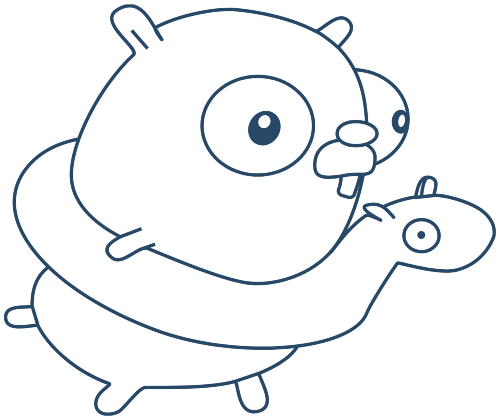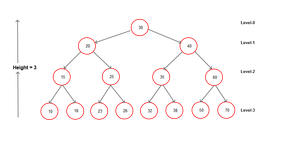Introduction
In the evolving programming landscape, Python and Go have emerged as powerful languages, each with unique strengths. This post aims to reiterate some commonly known yet useful differences and offer insights into where each language shines.
Data Typing
Python's dynamic typing offers agility in development, whereas Go's static typing ensures type safety and efficiency. This foundational difference impacts data flow, with Go potentially offering more predictability in performance-critical applications.
Concurrency Model
Despite its threading module, Python's GIL is a bottleneck. Go's goroutines and channels, on the other hand, provide a more scalable approach to concurrency, making Go a strong candidate for high-concurrency applications.
Error Handling
Python embraces exceptions for managing errors, promoting clean code at the potential cost of hidden control flows. Go's explicit error handling encourages developers to confront errors directly, fostering robust data processing routines.
Speed and Performance
While Python excels in developer productivity and has libraries that close the performance gap (e.g., NumPy for numerical computations), Go's compiled nature generally offers superior performance for raw data processing tasks.
Libraries and Tools
Python's rich ecosystem of data science libraries (like Pandas and NumPy) is unparalleled for analytics tasks. Go is catching up, with libraries such as Go Dataframe offering data manipulation tools, but Python remains the leader for data analysis.
Syntax and Ease of Use
Python's readability and concise syntax make it ideal for quick development cycles and data science applications. Go's syntax, emphasizing explicitness and type safety, might require more lines of code but ensures clarity and performance in large-scale applications.
Choosing the Right Tool: Python, Go, and Java
Transitioning from Python to Go can provide useful insights. While Python allows for concise code, Go programs may be more verbose but are excellent in performance and explicitness. This does not undermine Python's strengths, as its vast ecosystem promotes readability and offers acceptable performance trade-offs as a general-purpose language. In an enterprise environment, developers can combine Python's readability with performant C libraries for specific tasks, making it ideal for smaller projects and rapid prototyping. Python holds an unrivaled position in data science and machine learning due to its simplicity and powerful libraries such as Pandas, NumPy, and TensorFlow.
Java's historical dominance in enterprise environments stems from factors beyond language merit, such as platform independence and security. However, its richness can be a double-edged sword. While Java boasts a rich ecosystem with frameworks such as Spring and Hibernate, which provide robust and scalable foundations for enterprise-level applications, this abundance of options can introduce complexity. Managing multiple build tools, configuration files, and potentially overlapping functionalities from different frameworks can be challenging, especially for rapid development cycles.
Python's concise syntax, extensive data science libraries, and emphasis on rapid prototyping make it a compelling alternative. Businesses can leverage Python for data analysis and automation and even achieve performance for specific tasks. Yet, Java's established presence and large talent pool make it a mainstay for core enterprise applications, especially when integrated with existing Java codebases.
For some enterprises, Go emerges as a potential middle ground. Go balances readability and performance, similar to Python's focus on simplicity and concurrency. Go excels in this area with its built-in support for concurrency through goroutines and channels, making it particularly well-suited for building scalable and high-performance web servers and microservices. While Go delivers impressive performance, it's important to note that Python's performance can be significantly enhanced with PyPy, a JIT compiler, or by integrating with C extensions for computationally intensive tasks.
Finally, all three languages benefit from vibrant communities and comprehensive documentation. These resources are crucial in troubleshooting, knowledge sharing, and evolving each language's capabilities. Ultimately, choosing Python, Go, and Java depends on project specifics. Many enterprises strategically adopt a combination of these languages based on their needs for rapid development, data analysis, robust core applications, and scalable backend systems.
Python 3.12 + PEP 703
The PEP 703 proposal for Python 3.12 introduces a significant change to remove the Global Interpreter Lock (GIL), a mechanism that has historically limited Python's ability to be truly multi-threaded. This removal will enhance Python's performance on multi-core systems, potentially making it more competitive with languages like Go regarding concurrency and parallel execution capabilities.
The Go-Python Bridge:
Using optimized Go code in Python is possible and is an area projects like GOPY is working on - gopy generates (and compiles) a CPython extension module from a go package.
Modernizing Reddit's Comment Backend Infrastructure
by u/Okgaroo in RedditEng
A developer walks into a bar and orders a beer. As they wait, they hear a high-pitched voice: "Hey, those jeans look really great on you!"
The developer looks around but sees nothing. Then, they hear a deeper voice: "You seem like an awesome person!"
The developer again glances around but sees no one. Finally, a soft voice whispers, "You're doing a great job!"
Confused, the developer asks the bartender, "What's that all about?"
The bartender replies, "Those are the new programming languages they just put on tap. Go is really chatty, Java's full of compliments, and Python keeps telling you you're doing everything right."




